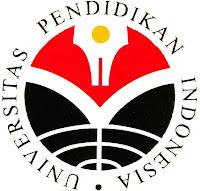Disusun Ulang Oleh:
Arip Nurahman
Department of Physics
Faculty of Sciences and Mathematics, Indonesia University of Education
and
Follower Open Course Ware at Massachusetts Institute of Technology
Cambridge, USA
Department of Physics
http://web.mit.edu/physics/
http://ocw.mit.edu/OcwWeb/Physics/index.htm
&
Aeronautics and Astronautics Engineering
http://web.mit.edu/aeroastro/www/
http://ocw.mit.edu/OcwWeb/Aeronautics-and-Astronautics/index.htm


Pameran kedirgantaraan atau pameran penerbangan (
Inggris:
airshow) adalah
pameran yang umumnya diikuti oleh pabrikan atau kontraktor yang bergelut dibidang kedirgantaraan. Umumnya yang dipamerkan berupa pesawat terbang komersial,
pesawat tempur dan teknologi pendukung seperti
radar,
rudal, sistem navigasi bahkan hingga ban atau roda pesawat.
Sejarah
Pameran kedirgantaraan Perancis
Sejak ditemukannya
pesawat terbang yang diyakini sebagian besar kalangan oleh Wright Bersaudara (
Wilbur Wright dan
Orville Wright) pada Desember 1903, sampai enam tahun sesudahnya, khususnya di
Eropa, belum ada pameran kedirgantaraan atau yang umum dikenal sebagai pameran penerbangan (Air Show). Dorongan untuk memamerkan kemajuan dibidang kedirgantaraan muncul ketika Wright Bersaudara melakukan kunjungan ke
Perancis pada ahun 1908.
Pada waktu itu, Perancis sudah menjadi pusat kegiatan penerbangan Eropa hingga banyak acara yang berhubungan dengan kegiatan penerbangan berlangsung disana, termasuk sebuah pertemuan yang berlangsung di Port Aviation di
Juvisy di luar kota
Paris 23 Mei 1909.
Tak lama setelah itu, tepatnya pada tanggal
25 Juli 1909 Louis Bleriot terbang melintasi
selat Inggris dengan pesawat sayap tunggal (monoplane) hasil rancangannya sendiri. Guna merayakan keberhasilannya, diadakan sebuah perayaan satu pekan kedirgantaraan yang meriah dengan nama
Grande Semain d'Aviation de la Champagne yang berlangsung di
Rheims antara 22 hingga 29 Agustus. Acara ini kemudian diikuti dengan sebuah pameran udara Internasional di
Grand Palais di
Champs Elysees dari tanggal 3 hingga 17 Oktober 1909 dengan demonstrasi terbang yang diadakan di Juvisy. Acara inilah yang merupakan asal muasal Pameran kedirgantaraan
Paris-Le Bourget yang nama resminya adalah
Le Salon International de l'Aeronatique et del'Espace de Paris-Le Bourget.
Pameran kedirgantaraan Inggris
Di Inggris, perkembangan pameran kedirgantaraan kemudian tidak terlepas dari peranan Himpunan Perusahaan Kedirgantaraan Inggris (SBAC, The Society of British Aerospace Companies) yang sebelumnya bernama The Society of British Aircraft Constructors yang mengorganisir pameran pesawat sejak 1918.
Pameran pesawat utama di Inggris mula-mula dilaksanakan di Olympia,
London tetapi sejak 1932 dipindahkan ke lapangan udara sehingga dapat dimasukkan acara demonstrasi terbang. Inggris kemudian membangun lapangan udara Hampshire pada tahun 1948 di sebuah wilayah bernama
Farnborough yang kemudian terkenal sebagai tempat pameran pameran kedirgantaraan termasuk pesawat, perlengkapan dan perkembangan teknologinya. Sampai tahun 1962 pameran kedirgantaraan Perancis diselenggarakan setiap tahun sekali, dan sesudah itu setiap dua tahun sekali dalam bulan yang sama yakni september.
Perkembangan pameran kedirgantaraan
Selain Inggris dan Perancis, perkembangan teknologi kedirgantaraan juga berkembang di berbagai kawasan khususnya
Timur tengah dan
Asia Pasifik. Seiring dengan berkembangnya transportasi udara dan kebutuhan kebutuhannya, juga tidak terlepas dari kebutuhan untuk memodernisasi peralatan pertahanan udara di kawasan tersebut. Umumnya, pameran kedirgantaraan tidak terlepas dari pameran teknologi pertahanan khususnya teknologi pertahanan udara seperti pesawat tempur, radar dan rudal. Terlepas dari tersimpannya konflik antar negara maupun kebutuhan memodernisir peralatan pertahanan suatu negara.
Di kawasan Asia Pasifik, dikenal pameran kedirgantaraan
Asian Aerospace yang diselenggarakan di
Singapura yang dimulai pada 1981, kemudian pameran kedirgantaraan di
Korea,
Jepang, dan
Tiongkok yang dikombinasikan dengan pameran pertahanan untuk angkatan darat dan angkatan laut,
Pameran Lima (kombinasi antara udara dan laut) di
Malaysia tepatnya di
Langkawi, pameran pertahanan Asia di
Thailand dan untuk
Indonesia pada masa sebelum dilanda ekonomi ada pameran yang dikenal sebagai Indonesian Air Show (1986 dan 1996). Untuk kawasan timur tengah terdapat pameran kedirgantaraan dan pertahanan
Dubai.
Di dalam pameran kedirgantaraan umumnya terjadi transaksi atau kontrak atara pabrikan atau perusahaan pembuat pesawat terbang, kontraktor dirgantara yang berperan dalam pemeliharaan sampai perlengkapannya baik perlengkapan yang bersifat teknis sampai bersifat kenyamanan, baik sipil maupun militer. Meski kontrak tersebut tidak langsung timbul dalam penyelenggaraan pameran. Melalui pameran tersebut kalangan industri dapat berinteraksi, mengetahi informasi dari pesaing maupun untuk komersial. Sementara bagi pengamat kedirgantaraan, dapat mencatat berbagai kemajuan yang sudah diperoleh.
Untuk transaksi, dicatat terjadi transaksi besar besaran selama pameran seperti transaksi untuk penjualan pesawat
F-16 terbesar untuk memenuhi kebutuhan pertahanan
NATO setelah mengalahkan
Mirage F-1 dari Perancis setelah diadakan uji terbang, kontrak penjualan pesawat
Boeing 777 kepada
Singapore Airlines yang tercatat memesan 77 buah pesawat dan kontrak penjualan
Airbus A 380 ke berbagai maskapai penerbangan pada awal abad ke 21.
Sejumlah atraksi kedirgantaraan juga mewarnai pameran kedirgantaraan, yang umumnya secara tidak langsung dikaitkan dengan penawaran pesawat khususnya pesawat tempur yang dipromosikan, seperti atraksi team
Red Arrows Angkatan Udara Inggris yang dapat dikaitkan dengan promosi penjualan pesawat latih
Hawk, team
Ruskiye Vitayasi (Ksatria Rusia) dengan
Su-27 Flanker, Stirji (Rusia) dengan
MiG 29 maupun
Thunderbirds dengan F-16. Atrasksi lain adalah atraksi tunggal untuk menunjukkan kemampuan manuver pesawat pesawat yang ditawarkan seperti Atraksi Su-37 Flanker dari Rusia yang mampu melakukan manuver yang belum dapat dilakukan pesawat tempur satu generasi dari Barat dengan manuver kompleks seperti
Kobra Pugachev,
Bell dan
Kulbit.
Namun kecelakaan sering terjadi dalam atraksi-atraksi udara ini. Diantaranya gagalnya Manuver MiG 29 Fulchrum yang mengakibatkan pesawatnya menukik tak terkendali, patah dan terbakar di udara pada pameran Paris-Le Bourget 1989, yang beruntung pilotnya dapat selamat dengan kursi lontar dari ketinggian 30 meter. Meski dianggap sebuah kegagalan, namun biro MiG yang memproduksi MiG 29 secara tidak langsung dapat mempromosikan bahwa kursi lontar Zvesda yang ternyata sangat tanggap. Hal yang sama terjadi saat
Tu-144 Concordski terbang tidak terkontrol dan jatuh saat pameran Paris-Le Bourget 1973.
Selain itu, pesawat teknologi tinggi yang ikut dipamerkan sering menjadi pesawat yang tidak begitu laris dipasaran internasional. Karena umumnya, pemakai pesawat tidak hanya melihat dari segi teknologinya, melainkan juga mempertimbangkan hal hal lain seperti bagaimana pengguna pesawat lain dalam menggunakan produk tersebut baik kehandalan sampai masalah perawatan dan suku cadang.
Wikipedia





